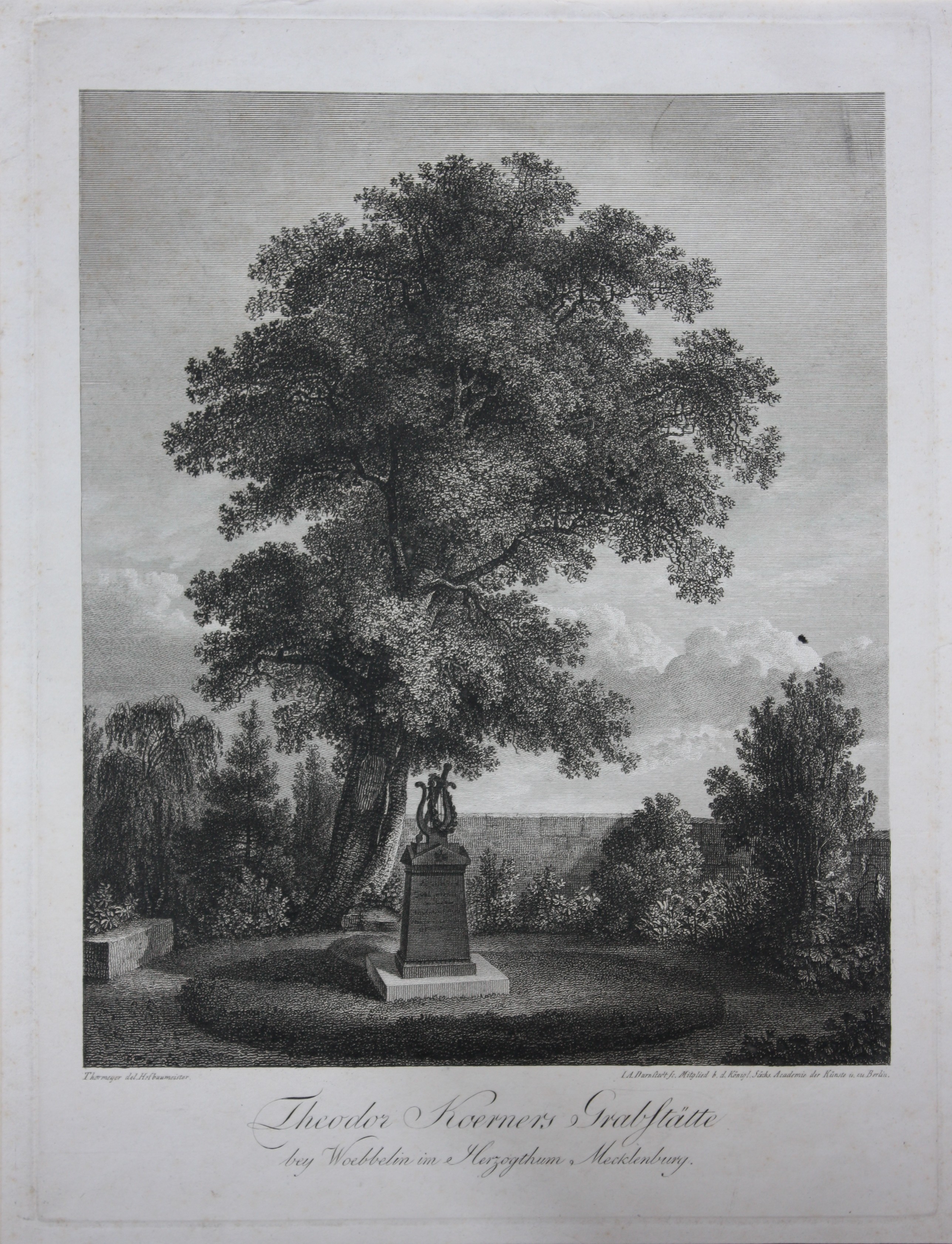Kupferstich von Johann Adolph Darnstedt (1769-08.05.1844) nach einer Zeichnung von Gottlob Friedrich Thormeyer (23.10.1775-11.02.1842). Er zeigt das Grabmal des Schriftstellers Theodor Körner (23.09.1791 - 26.08.1813), von Thormeyer geschaffen in Wöbbelin (Mecklenburg-Vorpommern) unter der nach ihm benannten "Körner-Eiche". Das Grabmal trägt Leier und Schwert als Symbole für die besonderen biografischen Merkmale Körners; so war er als Soldat des Lützowschen Freikorps gefallen. Die vier Seiten des Grabmals sind mit Inschriften versehen. Der Stich zeigt den Zustand des Grabes vor 1815, als mit Schwester Emma Sophia weitere Familienmitglieder beigesetzt wurden. Links: "Thormeyer del. Hofbaumeister", rechts: "L.A.Darnstedt sc. Mitglied b. d. Königl. Sächs. Akademie der Künste u. zu Berlin."
en

